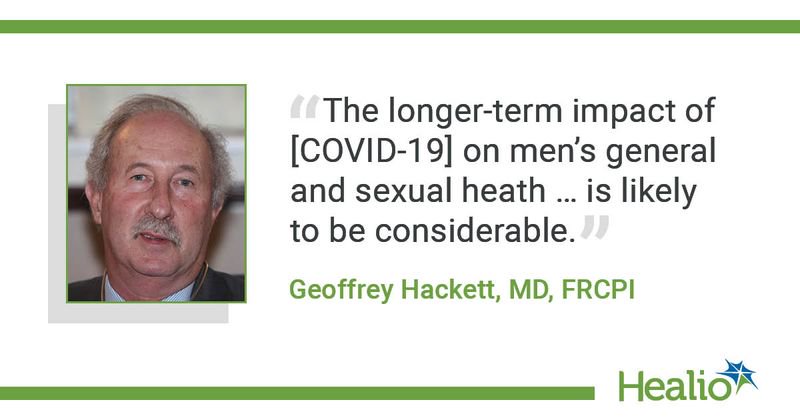Low testosterone level increases mortality risk for men hospitalized with COVID-19
Men hospitalized with COVID-19 with a serum total testosterone of less than 3.9 nmol/L have a greater risk for death compared with those with higher testosterone levels, according to study data.
“Acute COVID-19 infection is associated with very low testosterone levels on admission,” Geoffrey Hackett, MD, FRCPI, professor of sexual medicine at Aston University Medical School and Spire Hospital Little Aston in the U.K., told Healio. “The lower the testosterone level, the greater the need for ventilation and the higher risk for mortality. In survivors, over 50% of levels have not returned to normal and 10% continue to decline. The longer-term impact of this on men’s general and sexual heath and future fertility is likely to be considerable and not aided by the U.K. approach to COVID-19, which is to ignore the problem altogether.”

Hackett and colleagues analyzed data from 110 consecutive men hospitalized with suspected COVID-19 at Walsall Manor Hospital in the U.K. between October 2020 and March 2021. None of the men were on testosterone therapy. Demographics, length of stay and drug history were obtained from the patient administrative system. Laboratory data, including total testosterone, were collected from the clinical biochemistry department database. The analysis and testing was performed by Black Country Pathology Services at Walsall Manor Hospital.
The findings were published in Androgens: Clinical Research and Therapeutics.
Of the study cohort, 85 tested positive for COVID-19 and 25 tested negative. There was no difference in serum total testosterone between those who tested positive and those who tested negative.
Of men who tested positive for COVID-19, 58 survived and 27 died in the hospital prior to data collection. All men who died had a serum total testosterone of 11.1 nmol/L or less. Men who died had lower median total testosterone than those who survived (2 nmol/L vs. 5 nmol/L; P = .0011).
In logistic regression analysis, older age (OR = 1.06; 95% CI, 1.02-1.11; P = .005) and lower total testosterone (OR = 0.77; 95% CI, 0.64-0.91; P = .003) were associated with an increased risk for COVID-19 mortality. In Cox regression analysis in which men were stratified by total testosterone concentration, those with a total testosterone level of 3.9 nmol/L or higher had a lower risk for mortality than those with a testosterone level of less than 3.9 nmol/L (HR = 0.24; 95% CI, 0.089-0.63; P = .004).
“COVID-19 targets the testes and leads to near-castrate levels greater than seen in acute illness,” Hackett said. “The strong link with high mortality was unexpected. We were also surprised with the resistance to measuring testosterone levels, in contrast with expensive biomarkers with little impact on management.”
Hackett said future research should examine associations between testosterone concentration and long COVID as well as COVID-19’s impact on sexual function.
For more information:
Geoffrey Hackett, MD, FRCPI, can be reached at hackettgeoff@gmail.com.

